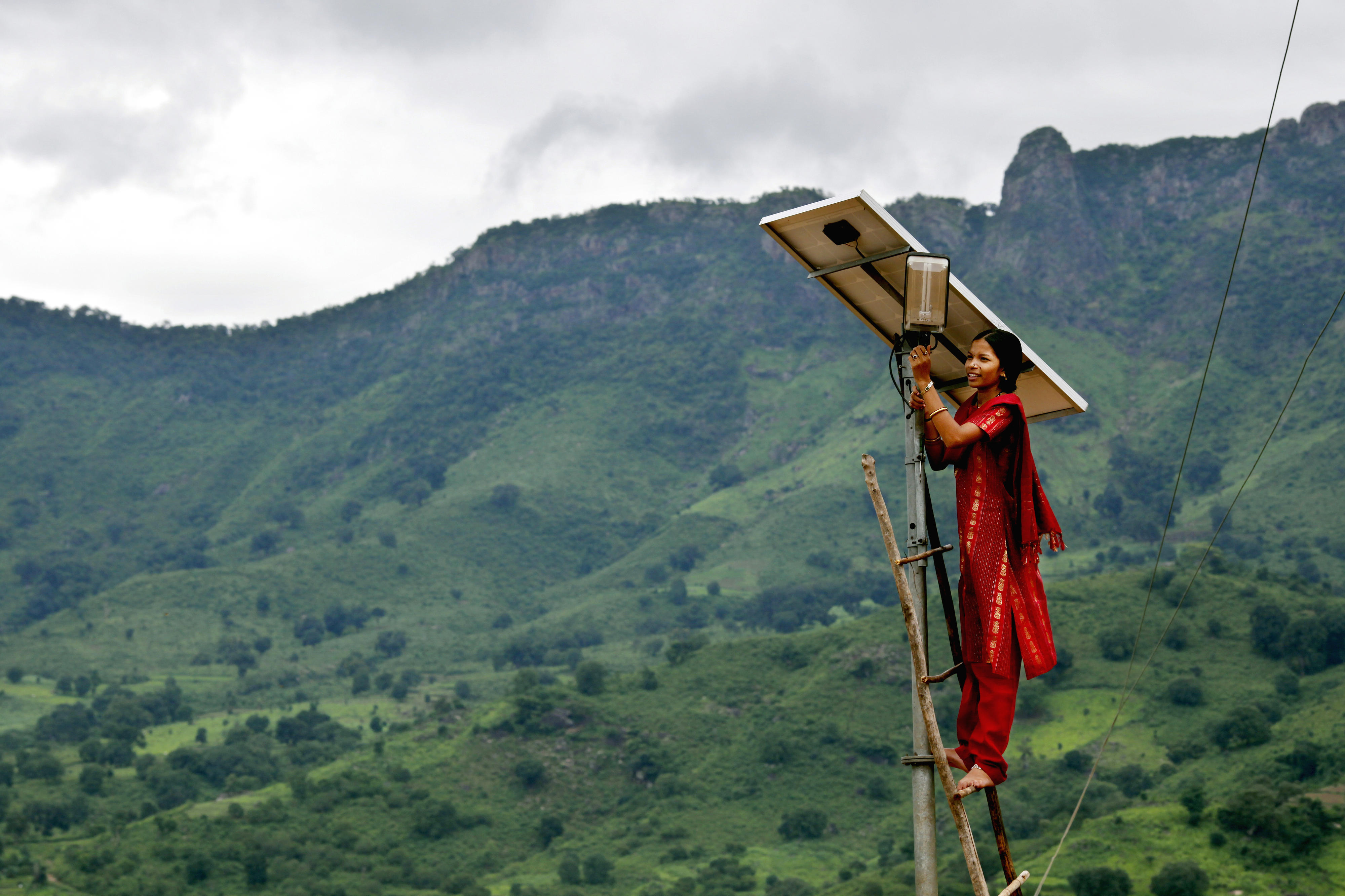A solar engineer checks a solar-powered street lamp.
Copyright© Abbie Trayler-Smith/DFID, via flickr, CC BY-NC-ND 2.0
Priority area “Renewable energy, energy efficiency” Fostering the energy transition in India
India’s energy consumption is growing significantly as a result of population and economic growth. Around 80 per cent of the country’s energy is still supplied by fossil fuels – mainly coal. Many existing power stations are antiquated, produce high levels of greenhouse gas emissions and are not always able to fully meet the increased demand for energy.
India is currently the world’s third largest emitter of CO₂. This means that India’s energy policy has a direct influence on the global climate. That said, per capita emissions in India are relatively low: according to the Global Carbon Project (GCP), in 2022 they amounted to 2 tonnes of CO₂ per person (Germany: 8.9 tonnes; global average: 4.7 tonnes). This means that while India accounts for around 18 per cent of the world’s population, it only accounts for 7.6 per cent of global greenhouse gas emissions.
Renewable Energy Partnership
Germany is supporting India in achieving an environmentally friendly and just energy transition. It is facilitating, for example, the construction of solar and wind power plants and transmission lines (“green energy corridors”) that enable the feed-in of solar, wind and hydropower into the national grid. Most of the funding is provided in the form of reduced-interest loans from KfW Development Bank, but part of it is provided as part of Technical Cooperation.
In 2015, Germany and India agreed to launch the “Indo-German Solar Partnership”. Building on this, in May 2022 the German Development Ministry (BMZ) concluded a Renewable Energy Partnership with India. The topics covered by the Partnership are the broad use of renewable energy, including in agriculture, the integration of renewable energy sources into the power grid and the use of innovative storage technology.
With German support, facilities have already been installed that can provide around four gigawatts of electricity from renewable sources each year. BMZ-funded measures to promote energy efficiency have contributed to an annual reduction in CO₂ emissions of around 105 million tonnes. In addition, 7,770 kilometres of green energy corridors have been established, providing around 40 million people with electricity from renewable energy sources.
As at: 03/09/2024
